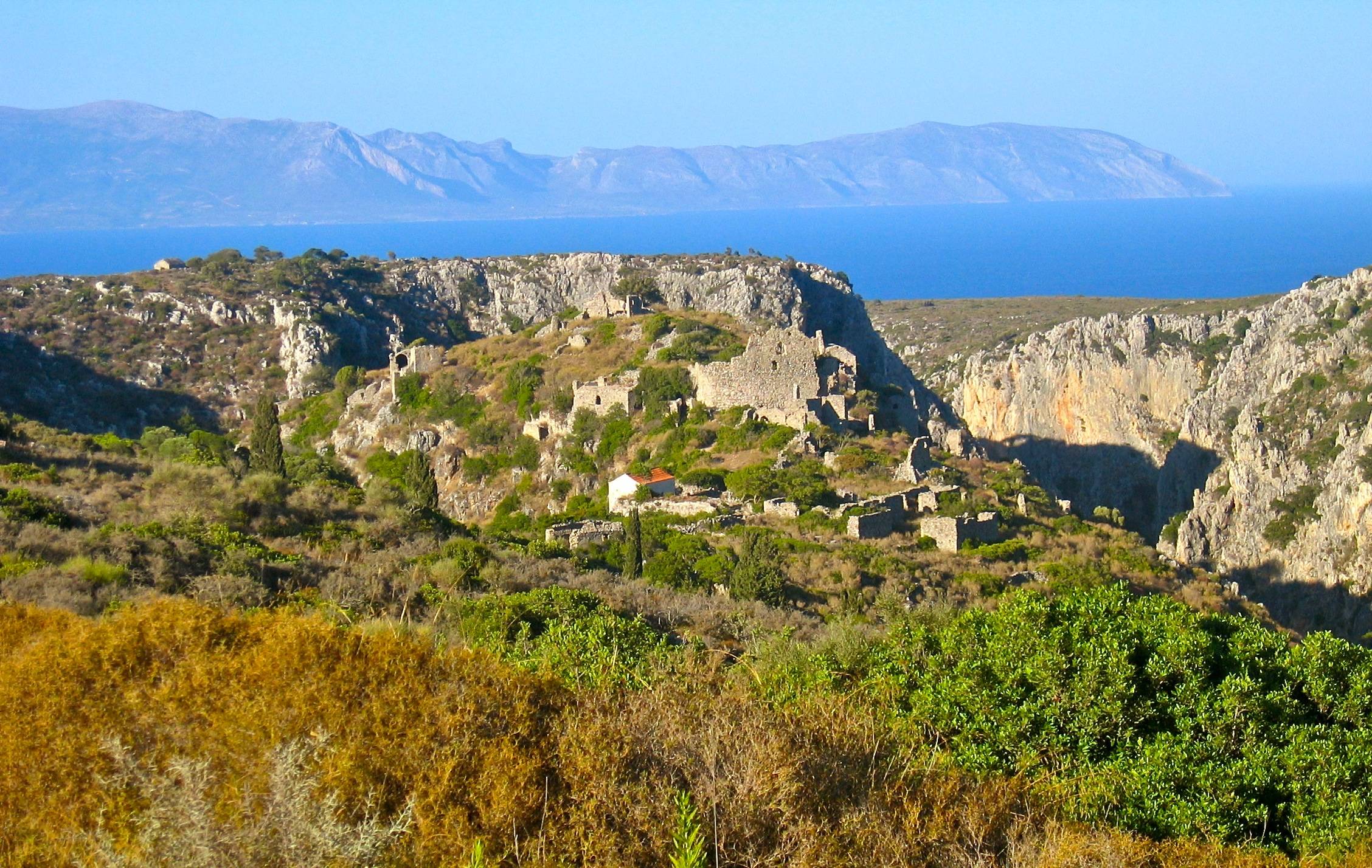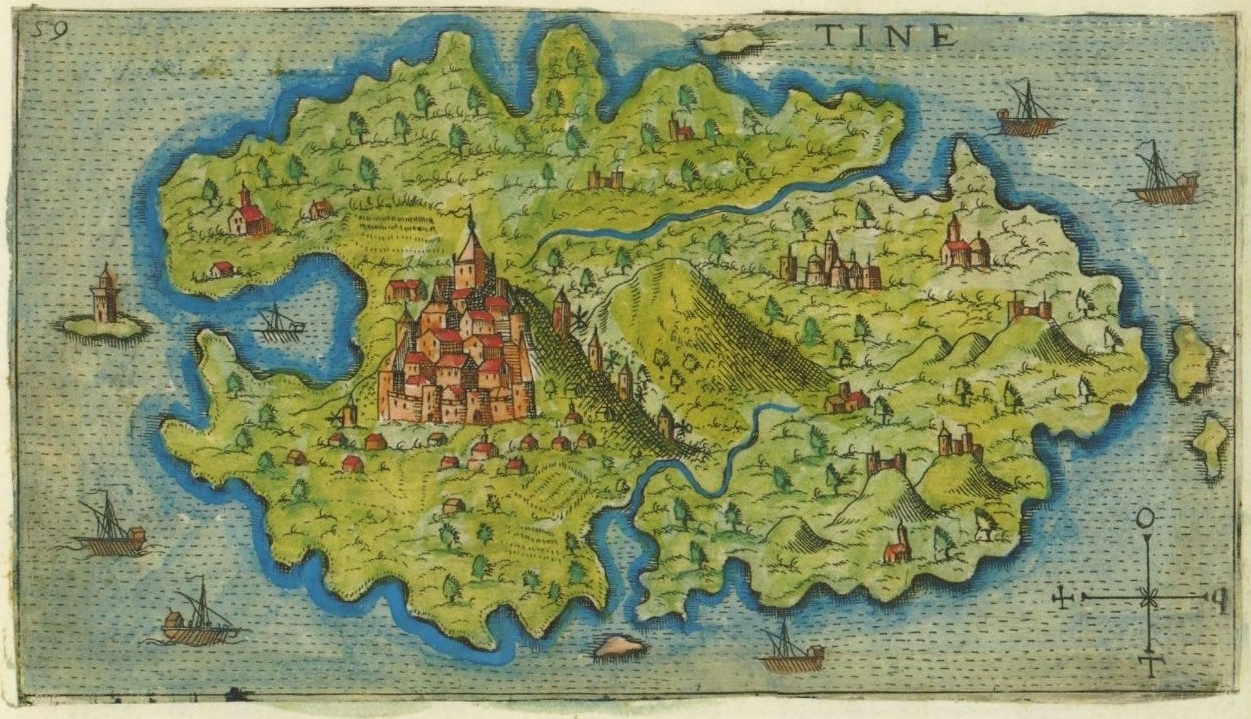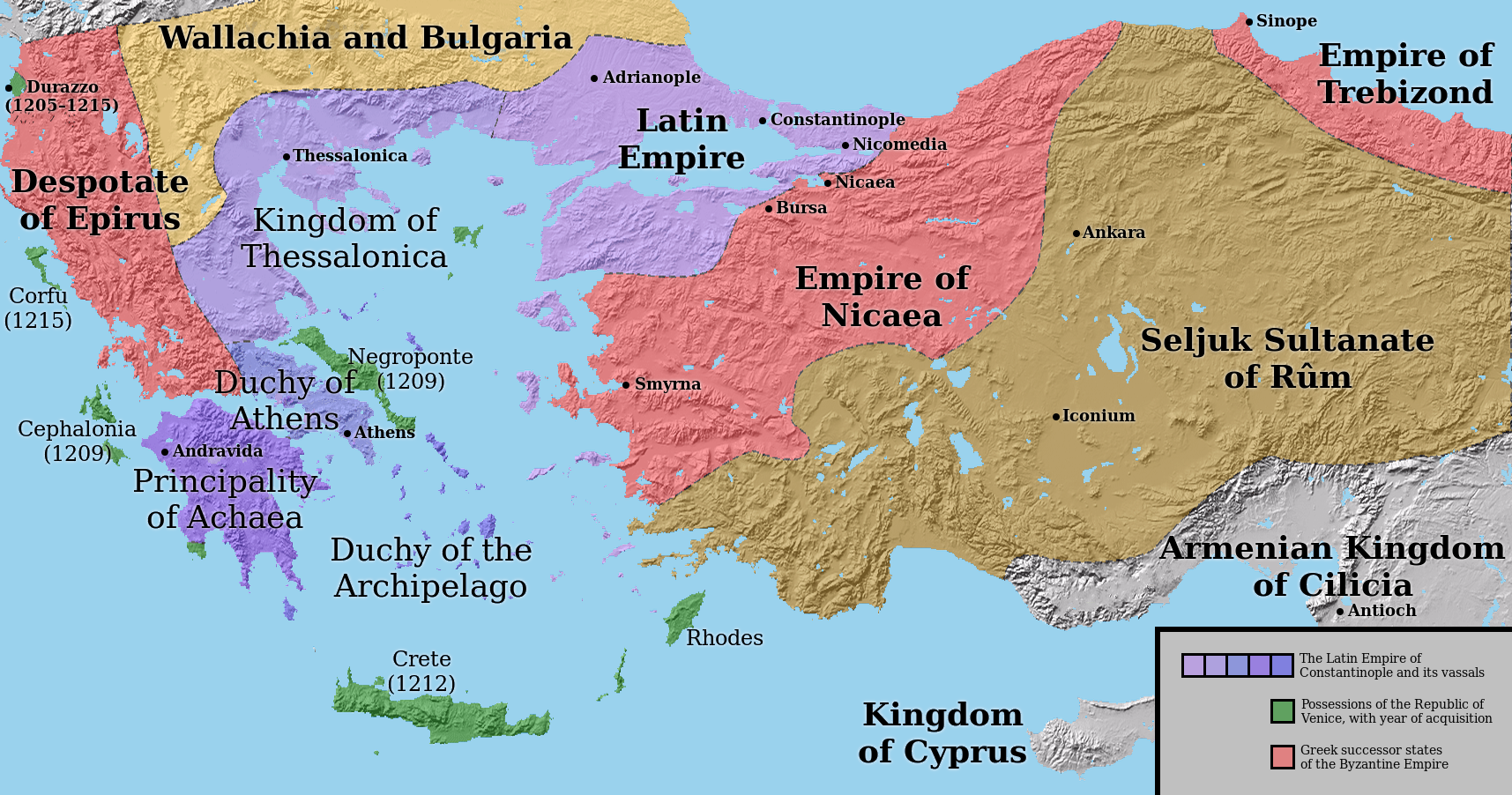|
Kingdom Of Candia
The Realm or Kingdom of Candia ( Venetian: ''Regno de Càndia'') or Duchy of Candia ( Venetian: ''Dogado de Càndia'' ) was the official name of Crete during the island's period as an overseas colony of the Republic of Venice, from the initial Venetian conquest in 1205–1212 to its fall to the Ottoman Empire during the Cretan War (1645–1669). The island was at the time and up to the early modern era commonly known as Candia after its capital, Candia or Chandax (modern Heraklion). In modern Greek historiography, the period is known as the Venetocracy ( el, Βενετοκρατία, ''Venetokratia'' or Ενετοκρατία, ''Enetokratia''). The island of Crete had formed part of the Byzantine Empire until 1204, when the Fourth Crusade dissolved the empire and divided its territories amongst the crusader leaders (see Frankokratia). Crete was initially allotted to Boniface of Montferrat, but, unable to enforce his control over the island, he soon sold his rights to Venice. Ven ... [...More Info...] [...Related Items...] OR: [Wikipedia] [Google] [Baidu] |
Late Middle Ages
The Late Middle Ages or Late Medieval Period was the Periodization, period of European history lasting from AD 1300 to 1500. The Late Middle Ages followed the High Middle Ages and preceded the onset of the early modern period (and in much of Europe, the Renaissance). Around 1300, centuries of prosperity and growth in Europe came to a halt. A series of famines and Plague (disease), plagues, including the Great Famine of 1315–1317 and the Black Death, reduced the population to around half of what it had been before the calamities. Along with depopulation came social unrest and endemic warfare. France and England experienced serious peasant uprisings, such as the Jacquerie and the Peasants' Revolt, as well as over a century of intermittent conflict, the Hundred Years' War. To add to the many problems of the period, the unity of the Catholic Church was temporarily shattered by the Western Schism. Collectively, those events are sometimes called the Crisis of the Late Middle Ages. D ... [...More Info...] [...Related Items...] OR: [Wikipedia] [Google] [Baidu] |
Greece
Greece,, or , romanized: ', officially the Hellenic Republic, is a country in Southeast Europe. It is situated on the southern tip of the Balkans, and is located at the crossroads of Europe, Asia, and Africa. Greece shares land borders with Albania to the northwest, North Macedonia and Bulgaria to the north, and Turkey to the northeast. The Aegean Sea lies to the east of the Geography of Greece, mainland, the Ionian Sea to the west, and the Sea of Crete and the Mediterranean Sea to the south. Greece has the longest coastline on the Mediterranean Basin, featuring List of islands of Greece, thousands of islands. The country consists of nine Geographic regions of Greece, traditional geographic regions, and has a population of approximately 10.4 million. Athens is the nation's capital and List of cities and towns in Greece, largest city, followed by Thessaloniki and Patras. Greece is considered the cradle of Western culture, Western civilization, being the birthplace of Athenian ... [...More Info...] [...Related Items...] OR: [Wikipedia] [Google] [Baidu] |
Prefectures Of Greece
During the first administrative division of independent Greece in 1833–1836 and again from 1845 until their abolition with the Kallikratis reform in 2010, the prefectures ( el, νομοί, sing. νομός, translit=nomoi, sing. nomós) were the country's main administrative unit. They are now defunct, and have been approximately replaced by regional units. They are called departments in ISO 3166-2:GR and by the United Nations Group of Experts on Geographical Names. The prefectures were the second-degree organization of local government, grouped into 13 regions or (before 1987) 10 geographical departments, and in turn divided into provinces and comprising a number of communities and municipalities. The prefectures became self-governing entities in 1994, when the first prefectural-level elections took place. The prefects were previously appointed by the government. By 2010, their number had risen to 51, of which one, the Attica Prefecture, where more than a third of the ... [...More Info...] [...Related Items...] OR: [Wikipedia] [Google] [Baidu] |
Kythira
Kythira (, ; el, Κύθηρα, , also transliterated as Cythera, Kythera and Kithira) is an Greek islands, island in Greece lying opposite the south-eastern tip of the Peloponnese peninsula. It is traditionally listed as one of the seven main Ionian Islands, although it is distant from the main group. Administratively, it belongs to the Islands (regional unit), Islands regional unit, which is part of the Attica (region), Attica region, despite its distance from the Saronic Islands, around which the rest of Attica is centered. As a municipality, it includes the island of Antikythera to the south. The island is strategically located between the Greek mainland and Crete, and from ancient times until the mid 19th century was a crossroads of merchants, sailors, and conquerors. As such, it has had a long and varied history and has been influenced by many civilizations and cultures. This is reflected in its architecture (a blend of traditional, Aegean Sea, Aegean and Venice, Venetian el ... [...More Info...] [...Related Items...] OR: [Wikipedia] [Google] [Baidu] |
Tinos
Tinos ( el, Τήνος ) is a Greek island situated in the Aegean Sea. It is located in the Cyclades archipelago. The closest islands are Andros, Delos, and Mykonos. It has a land area of and a 2011 census population of 8,636 inhabitants. Tinos is famous amongst Greeks for the Church of Panagia Evangelistria, its 80 or so windmills, about 1,000 artistic dovecotes, 50 active villages and its Venetian fortifications at the mountain, Exomvourgo. On Tinos, both Greek Orthodox and Catholic populations co-exist, and the island is also well known for its sculptors and painters, such as Nikolaos Gysis, Yannoulis Chalepas and Nikiforos Lytras. The island is located near the geographical center of the Cyclades island complex, and because of the Panagia Evangelistria church, with its reputedly miraculous icon of Virgin Mary that it holds, Tinos is also the center of a yearly pilgrimage that takes place on the date of the Dormition of the Virgin Mary (15 August, ''Dekapentavgoustos'' i ... [...More Info...] [...Related Items...] OR: [Wikipedia] [Google] [Baidu] |
Commune Veneciarum
The Commune of Venice ( la, Commune Veneciarum) is the title with which the government of the city of Venice and its Republic was designated from 1143. The municipality, similar to other medieval municipalities, was based on the popular power of the assembly, called Concio in Venice. It represented the patriciate of the city with a system of assemblies including the Great Council, Minor Council, Senate and the Council of Forty. Overview Unlike other Italian cities, Venice retained some vestiges of their previous institution of the monarchy embodied by the Doge for setting bounds for power that such assemblies were developing. The leading groups of most of the towns gathered at the time around the core of the ancient patrician families, creating a new merchant aristocracy with the '' Serrata del Maggior Consiglio'' of 1297 and actually took over the power and ousting the popular assembly. In the name of the Commune, it continued to operate the highest representative body of ... [...More Info...] [...Related Items...] OR: [Wikipedia] [Google] [Baidu] |
Sestiere (Venice)
Venice ( ; it, Venezia ; vec, Venesia or ) is a city in northeastern Italy and the capital of the Veneto Regions of Italy, region. It is built on a group of 118 small islands that are separated by canals and linked by over 400 bridges. The islands are in the shallow Venetian Lagoon, an enclosed bay lying between the mouths of the Po River, Po and the Piave River, Piave rivers (more exactly between the Brenta (river), Brenta and the Sile (river), Sile). In 2020, around 258,685 people resided in greater Venice or the ''Comune di Venezia'', of whom around 55,000 live in the historical island city of Venice (''centro storico'') and the rest on the mainland (''terraferma''). Together with the cities of Padua, Italy, Padua and Treviso, Italy, Treviso, Venice is included in the Padua-Treviso-Venice Metropolitan Area (PATREVE), which is considered a statistical metropolitan area, with a total population of 2.6 million. The name is derived from the ancient Adri ... [...More Info...] [...Related Items...] OR: [Wikipedia] [Google] [Baidu] |
Sestieri
A (plural: ) is a subdivision of certain Italian towns and cities. The word is from (‘sixth’), so it is thus used only for towns divided into six districts. The best-known example is the ''sestieri'' of Venice, but Ascoli Piceno, Genoa, Milan and Rapallo, for example, were also divided into ''sestieri''. The medieval Lordship of Negroponte, on the island of Euboea, was also at times divided into six districts, each with a separate ruler, through the arbitration of Venice, which were known as ''sestieri''. The island of Crete, a Venetian colony (the "Kingdom of Candia") from the Fourth Crusade, was also divided into six parts, named after the ''sestieri'' of Venice herself, while the capital Candia retained the status of a ''comune'' of Venice. The island of Burano north of Venice is also subdivided into ''sestieri''. A variation of the word is occasionally found: the ''comune'' of Leonessa, for example, is divided into or sixths. Other Italian towns with fewer than six o ... [...More Info...] [...Related Items...] OR: [Wikipedia] [Google] [Baidu] |
Republic Of Genoa
The Republic of Genoa ( lij, Repúbrica de Zêna ; it, Repubblica di Genova; la, Res Publica Ianuensis) was a medieval and early modern maritime republic from the 11th century to 1797 in Liguria on the northwestern Italian coast. During the Late Middle Ages, it was a major commercial power in both the Mediterranean Sea and the Black Sea. Between the 16th and 17th centuries it was one of the major financial centers in Europe. Throughout its history, the Genoese Republic established numerous colonies throughout the Mediterranean and the Black Sea, including Corsica from 1347 to 1768, Monaco, Southern Crimea from 1266 to 1475 and the islands of Lesbos and Chios from the 14th century to 1462 and 1566 respectively. With the arrival of the early modern period, the Republic had lost many of its colonies, and had to shift its interests and focus on banking. This decision would prove successful for Genoa, which remained as one of the hubs of capitalism, with highly developed banks ... [...More Info...] [...Related Items...] OR: [Wikipedia] [Google] [Baidu] |
Boniface I, Marquess Of Montferrat
Boniface I, usually known as Boniface of Montferrat ( it, Bonifacio del Monferrato, link=no; el, Βονιφάτιος Μομφερρατικός, ''Vonifatios Momferratikos'') (c. 1150 – 4 September 1207), was the ninth Marquis of Montferrat (from 1192), a leader of the Fourth Crusade (1201–04) and the king of Thessalonica (from 1205). Early life Boniface was the third son of William V of Montferrat and Judith of Babenberg, born after his father's return from the Second Crusade. He was a younger brother of William "Longsword", Count of Jaffa and Ascalon, and of Conrad I of Jerusalem. His youthful exploits in the late 1170s are recalled in the famous "epic letter", ''Valen marques, senher de Monferrat'', by his good friend and court troubadour, Raimbaut de Vaqueiras. These included the rescue of the heiress Jacopina of Ventimiglia from her uncle Count Otto, who was intending to deprive her of her inheritance and send her to Sardinia. Boniface arranged a marriage for her. Whe ... [...More Info...] [...Related Items...] OR: [Wikipedia] [Google] [Baidu] |
Frankokratia
The ''Frankokratia'' ( el, Φραγκοκρατία, la, Francocratia, sometimes anglicized as Francocracy, "rule of the Franks"), also known as ''Latinokratia'' ( el, Λατινοκρατία, la, Latinocratia, "rule of the Latins") and, for the Venetian domains, ''Venetokratia'' or ''Enetokratia'' ( el, Βενετοκρατία or Ενετοκρατία, la, Venetocratia, "rule of the Venetians"), was the period in Greek history after the Fourth Crusade (1204), when a number of primarily French and Italian states were established by the ''Partitio terrarum imperii Romaniae'' on the territory of the dissolved Byzantine Empire. The terms Frankokratia and Latinokratia derive from the name given by the Orthodox Greeks to the Western French and Italians who originated from territories that once belonged to the Frankish Empire. The Frankish Empire being the political entity which ruled much of the former Western Roman Empire after the collapse of Roman authority and power. ... [...More Info...] [...Related Items...] OR: [Wikipedia] [Google] [Baidu] |
Byzantine Empire
The Byzantine Empire, also referred to as the Eastern Roman Empire or Byzantium, was the continuation of the Roman Empire primarily in its eastern provinces during Late Antiquity and the Middle Ages, when its capital city was Constantinople. It survived the fragmentation and fall of the Western Roman Empire in the 5th century AD and continued to exist for an additional thousand years until the fall of Constantinople to the Ottoman Empire in 1453. During most of its existence, the empire remained the most powerful economic, cultural, and military force in Europe. The terms "Byzantine Empire" and "Eastern Roman Empire" were coined after the end of the realm; its citizens continued to refer to their empire as the Roman Empire, and to themselves as Romans—a term which Greeks continued to use for themselves into Ottoman times. Although the Roman state continued and its traditions were maintained, modern historians prefer to differentiate the Byzantine Empire from Ancient Rome ... [...More Info...] [...Related Items...] OR: [Wikipedia] [Google] [Baidu] |




.jpg)


